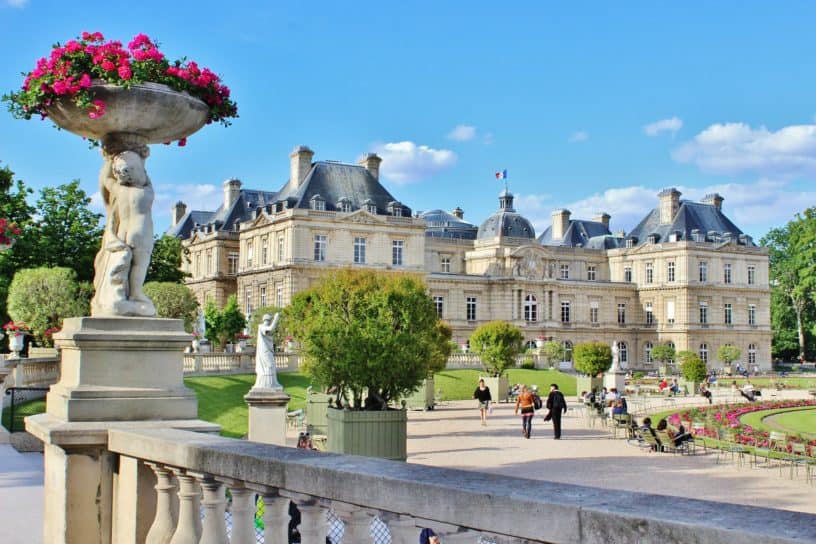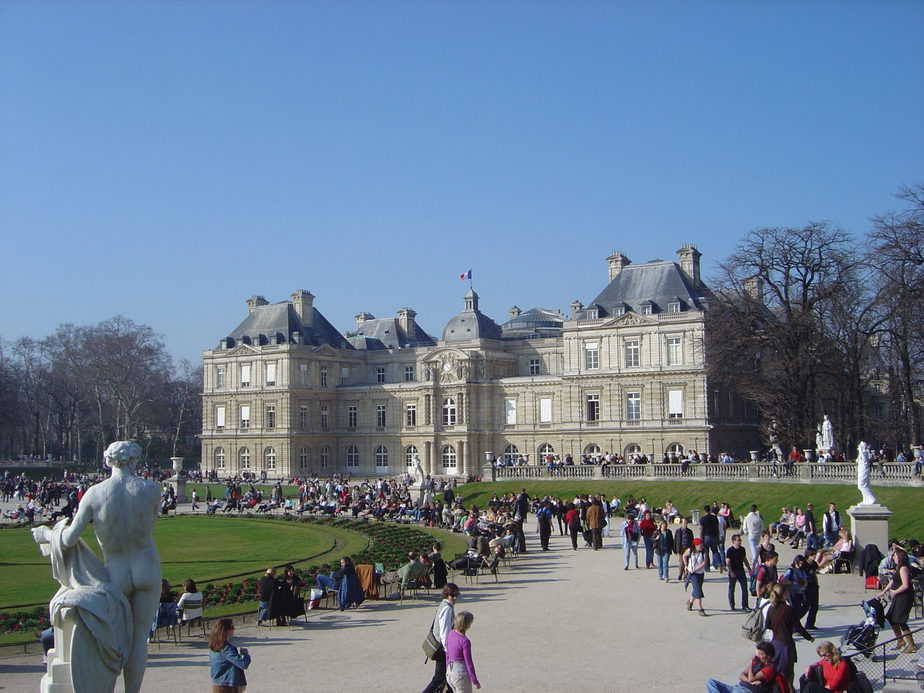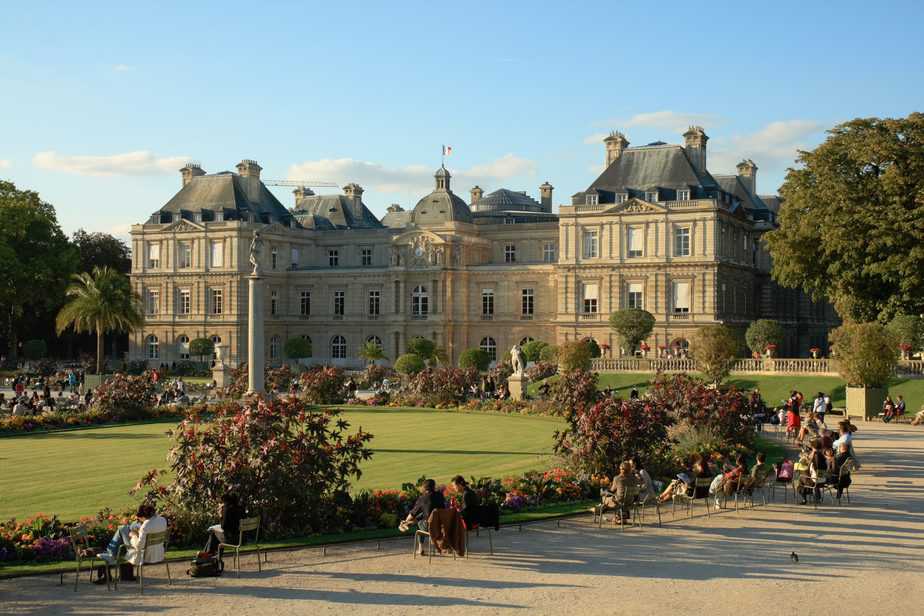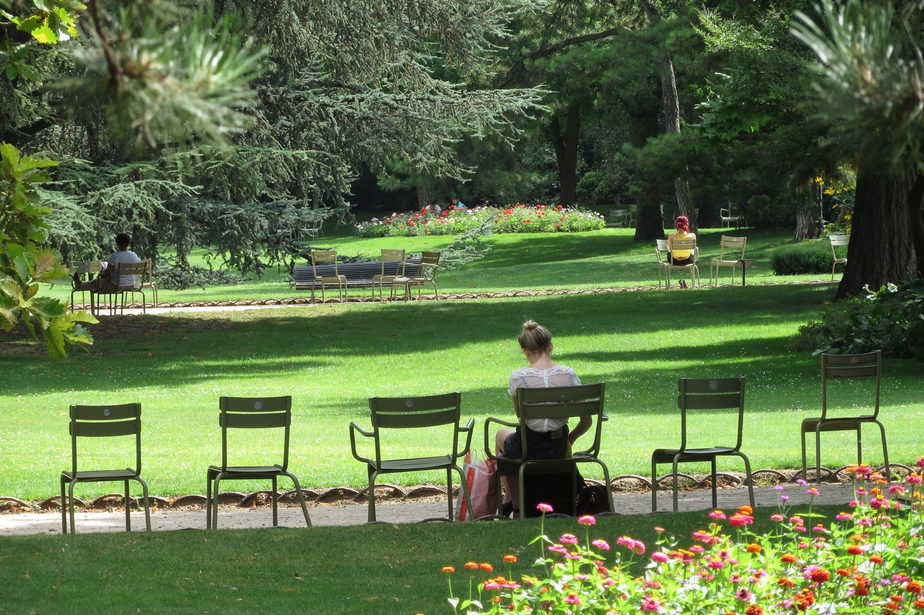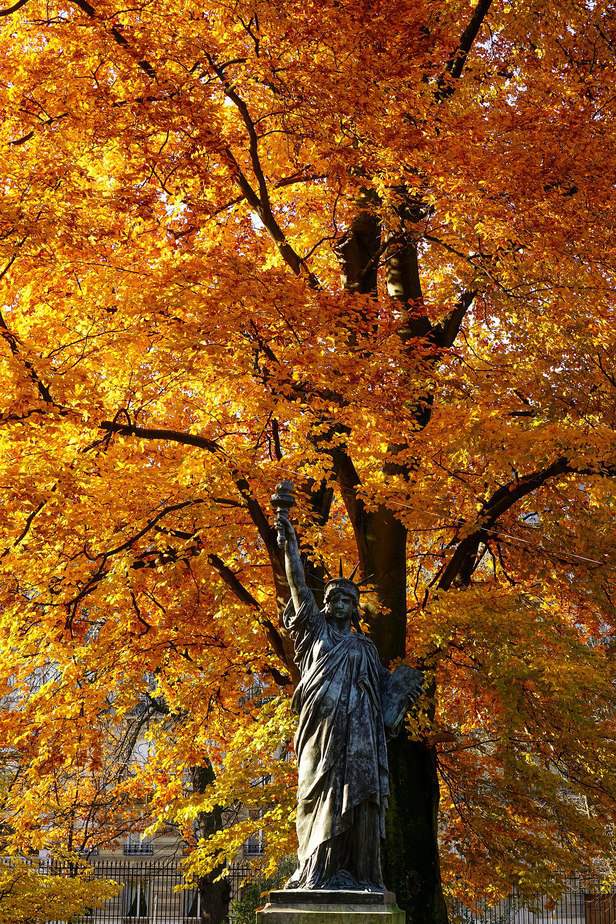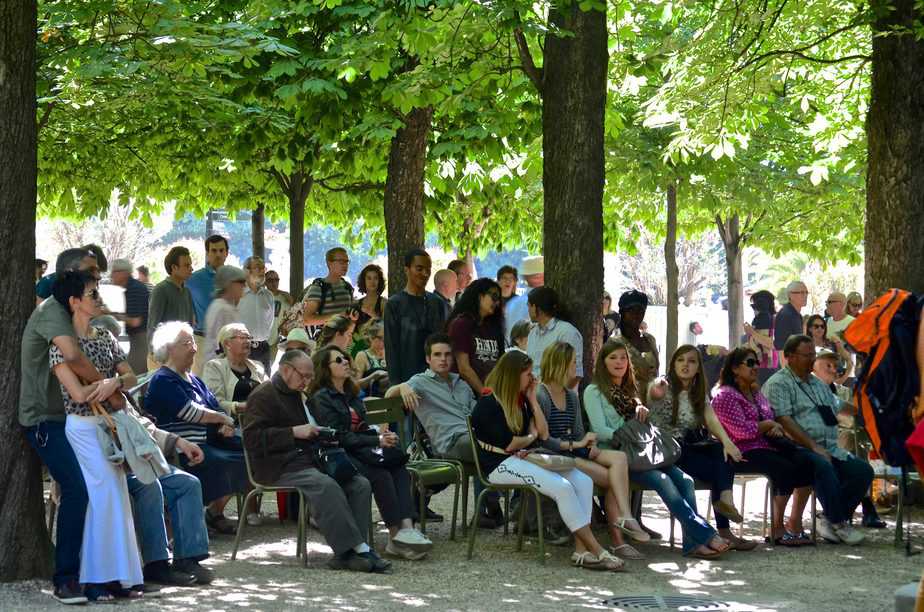4 Reasons to Visit the Luxembourg Gardens in Paris
The Luxembourg is one of the most, if not the most, popular garden in Paris. Not only because of its beauty but because it is full of life.
The Parisians come there to walk, to read a book, to have a drink, a picnic or a sunbathe but also to attend concerts, puppet shows and exhibitions, to play tennis, boules, chess and bridge.
You can call use the singular to designate it: “le jardin du Luxembourg” or the plural: “les jardins” because you have a diversity of gardens in the same spot and the same administrative unit. Most of the Parisians and myself prefer the singular.
The location of the garden also takes a major part in its popularity. It is situated at the limit between two popular neighborhoods: on the east the Latin Quarter, the territory of the students and the universities; on the west the classy Saint-Germain-des-Prés.
It is the big park of the south of Paris, the left bank, a place to breathe and enjoy some greenery in an ocean of limestone buildings.
I think you will appreciate better the Luxembourg gardens if you understand how it was organized, so let me start by a short historical introduction.
A brief history of the Luxembourg gardens
The name comes from a private mansion, l’hôtel de Luxembourg, owned by the family of Luxembourg. They were cousins of the dukes of Luxembourg in the Middle Ages but not related to the family that is ruling the country today.
The mansion and its gardens were bought in 1611 by a queen of France, Marie of Medicis. She was the widow of king Henri IV and did not want to stay in the official royal residence, the Louvre palace.
Coming from Florence, she wanted to build a palace that would remind her this town. The Palais du Luxembourg, the same as it is visible today, was thus modelled on the Pitti Palace and the first garden inspired by the Boboli garden.
Marie of Medicis had high ambitions for her garden. She got into the trouble of finding and renovating for 10 years the old Roman aqueduct, that has not been used for more than a millennium, only to bring water to her plants and trees.
It was a time when the Parisians did not have running water and had to drink the contaminated water of the river and the wells but, surprisingly, it did not cause a scandal.
The queen had to restrain the size of her garden due to the territory of a monastery that was close. The garden was expanded later but again cut in the XIXth century. It explains its strange shape and lack of homogeneity.
The queen was eventually exiled from Paris by her own son Louis XIII. The palace was latter used by some of the most important families of the French nobility. During the Revolution it was turned into a prison and became the siege of the government between 1795-1799.
Eventually Napoleon decided to give it to the high-chamber of the Parliament, the Senate. The building is still used today by the Senators, the President and the offices connected to the Senate.
Napoleon is also the one that started to transform the garden as the place of entertainment that it is today. Chalgrin, the architect of the Arch of Triumph, was commissioned to do the renovation.
Because of this connection, the garden is not run by the city of Paris but by the Senate. Its budget is around 12 million euros every year with 60 gardeners working full-time on it.
Here is a map to help you navigate in the gardens and to locate the spots I am going to mention in the rest of the articles:
Now that you have the basis to understand what you will see, here is 4 good reasons to visit the Luxembourg gardens.
1. Enjoy different types of gardens in one place
Because it was built in different stages at different times, the Luxembourg garden represent different styles of gardens. You can then choose your favorite one when you want to make a break.
The central part, in front of the palace in a north-south axis, you can find a French formal garden, or “jardin à la française”.
This kind of classical garden was typical of the royal garden of the XVIIth century, displaying a taste for the harmony of simple geometrical shapes. It was about the power of man over nature. Geometry, symmetry, well-trimmed trees and marble statues in the neoclassical style are the keywords to identify this style.
The master gardener of this style was André Le Nôtre, the gardener of Versailles and the Tuileries garden. He is the author of the garden you see today, replacing the Italian garden that was there before.
On the west side, along the rue Guynemer, you can find an English garden. It is meant to be the opposite of the French garden. It is more irregular and diversified, seeking the imitation of nature and picturesque views.
This style was conceived in England in the XVIIIth century but also conquered the hearts of the French gardeners. It reflected a new taste for nature and romanticism.
Separated only by a few alleys, these two sides of the garden have a very different atmosphere.
When I come to read a book in the garden, I prefer to find a chair under the shade of a tree in the alleys of the English garden. I find it more beautiful and quieter.
On the side, along the rue Auguste Comte, you can also find an orchard dedicated to old species of fruit trees. This collection also serves today for the classes of the School of Gardening.
On the south, you can find a grass where it is tolerated to sit and lie. If you want to find a spot for a picnic you should better arrive early! Hundreds of Parisians will have the same idea when the weather gets nice.
2. Enjoy an open-air museum of the statues
The statues of the queens and famous women
One of the biggest originalities of the Luxembourg gardens is that the majority of the statues represent women. You can find around the central balcony 20 marbles statues representing the queens of France and others French noble women.
One could think that is due to a 21th century initiative, reflecting a feminist agenda. But it it was decided in the middle of the XIXth century, by the king Louis-Philippe.
On the sides of the most recent courtyard of Le Louvre, where today you can find the pyramid, some statues representing famous French men had been displayed. In a very modern spirit of balance, it was decided to add these statues of women in front of the palace built by the queen Medicis.
The statue of Liberty
Even though it is quite unexpected, you will see on the west side of the garden a replica of the famous Statue of Liberty.
The original was made by the sculptor Bartholdi, with the help of the engineer Eiffel (yes, the author of the tower) to be given to the USA in 1886 as a symbol of Liberty.
Quickly it became very famous and appreciated, a source of pride for the French government that commissioned it.
For the world fair of 1900 in Paris, the government decided to present a bronze replica, sixteen times smaller than the original. Probably to make sure everybody remembers which country did the statue!
The statue was put in the Luxembourg garden afterwards. But it was degraded over time, so it was decided in 2012 to put this statue in the Orsay museum and to make a replica for the garden.
The Medicis fountain
On the northeast corner of the garden, you will see a concentration of tourists taking pictures of a fountain. They are coming for the Medicis fountain, the only statue coming from the beginning of the garden, in 1630.
We have said that Marie de Medicis was nostalgic of her home town. Furthermore, she considered the Italians fountain-makers as superior to the others: that is why a Florentine man, Tommaso Francini was commissioned to make this fountain.
Only the central gate was made by Francini. It was a gate in the Italian style, what was called a grotto. On top and in the middle, you can see on the shield, the symbol of the Medicis and the fleur-de-lys of the French monarchy.
In the middle of the XIXth century, the big renovator of Paris, Haussmann, decided to build the Rue de Medicis on the spot where the grotto was. It was decided to move the fountain where it is now.
The sculptor Auguste Ottin added a story from the mythology: the one-eyed giant Polyphemus discovering two lovers, Acis and Galatea.
In the story, Polyphemus falls in love with Galatea, kill his rival Acis and the nymph Galatea transform her dead lover into an immortal spirit of a river.
3. Have fun with the many activities of the garden
The Luxembourg garden is strongly associated in my mind to the open-air concerts. On the east side, you can find a big “kiosque”, a pavilion where orchestras and various groups of musicians can come.
Many Parisians come there, especially on the late-afternoon in the summer and bring their chairs under the shades of the chestnut tree to enjoy the music. You can check the program here.
On sunny days, a little crowd gathers around the central basin, in front of the palace. They play with their boats, commanded at a distance by a remote. It is often possible to rent one in the garden.
The Luxembourg garden is also one of the rare spot where you can play sports outdoor in the center of Paris. There is a basketball court, but also many tennis courts which are hard to find in Paris itself.
More informally, you will often see the kids of the area bringing a ball to play in the alleys.
4. Visit the Luxembourg museum
This museum situated on the north-west corner of the garden has a strong symbolic importance.
It was the first museum opened to the public in 1750. Before that, the private collections called the “cabinet de curiosités” were only visible for the guests of the wealthy owners.
Throughout the XIXth century, it was the contemporary art museum of Paris: the artists recognized while they were alive were exhibited inside. After a long time, usually after the death of the artist, the art pieces could be transferred in Le Louvre.
The test of the time was a way to ensure that an artist was not exhibited in Le Louvre because of his ties with the statesmen and the art critics or just because he fitted with a quickly changing trend.
Today, the museum holds major exhibitions. You can find a list of the present and past exhibitions here.
One of the main goals of the museum is to attract a young public and the publics who do not go to the museums.
Therefore, their exhibitions are often modern and accessible. It is also a small building so you will not feel overwhelmed with too many things too see.
***
You now have a better understanding of why the Parisians are so fond of this garden. Once you visit it, I am sure you will share their taste.
I think that the Luxembourg garden is not to be visited in a hurry. I suggest to have a walk around the garden and then to grab a chair and stay a little bit to enjoy the special atmosphere of the place. Maybe you can also imitate one of the favorite occupations of the Parisians and do some people-watching!
If you plan to take a private tour of Saint-Germain-des-Prés or the Latin Quarter, it can also be a good idea to suggest the Luxembourg gardens as an ending point to rest after your tour.
And if you follow our free tour of the Latin Quarter, the ending point, in front of the Pantheon, is only 2 minutes away from the Luxembourg gardens!
Planning a trip to Paris ? Get ready !
These are Amazon’s best-selling travel products that you may need for coming to Paris.
Bookstore
- The best travel book : Rick Steves – Paris 2023 – Learn more here
- Fodor’s Paris 2024 – Learn more here
Travel Gear
- Venture Pal Lightweight Backpack – Learn more here
- Samsonite Winfield 2 28″ Luggage – Learn more here
- Swig Savvy’s Stainless Steel Insulated Water Bottle – Learn more here
Check Amazon’s best-seller list for the most popular travel accessories. We sometimes read this list just to find out what new travel products people are buying.

